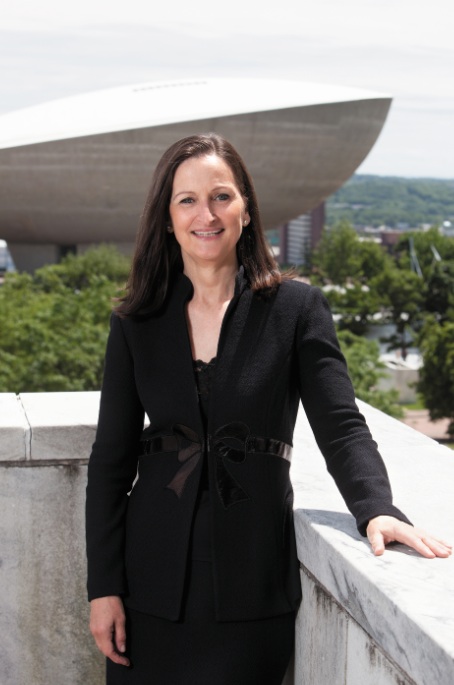Q&A: New York CIO Maggie Miller Details Statewide IT Overhaul
Appointed by New York Gov. Andrew M. Cuomo as state CIO in December, Maggie Miller came to the post following stints with Girl Scouts of the USA and Warner Music Group. Charged with overseeing centralized technology services and setting tech policy for the state, Miller leads a massive IT consolidation of data centers, email and collaboration tools, telecom modernization, and enterprise identity and access management. She recently spoke with StateTech magazine about the project.
STATETECH: What are your goals for the organization?
MILLER: We want everyone who interacts with the state to be able to engage with anybody about any topic and only need to enter their information once, whether they’re interacting as a private citizen or as a business owner. They should be able to find the information they need really easily, and if they don’t like the Internet, they can phone someone. We want the citizen to have the best possible experience. We want our agencies to feel like ITS is as committed to their mission as they are, and that we can deliver high-quality, secure, high-value solutions in a timely fashion. We want our workforce to say ITS is the place for smart IT people to work, and we want to be the employer of choice for every New York state college graduate.
STATETECH: What attracted you to a public sector job?
MILLER: I’ve been in the IT industry for more than 40 years. I was CIO for a $20 billion grocer in the UK, and then more recently CIO for Warner Music Group. I built my career working with organizations that are undergoing major transformations. I’m absolutely passionate about the potential for technology to transform organizations and, in this case, to transform the experience of both citizens and state employees. When this opportunity came along, I wanted to take what I’ve learned and see how I can use those experiences to benefit the citizens of my adopted home in New York.
STATETECH: What do the New York Office of Information Technology Services and the private sector have in common?
MILLER: We’re bringing together 50 different IT organizations, similar to the change you’d have to do in one very large merger of multiple organizations in the commercial world. We’ve got a lot of the same challenges — too many versions of everything, not enough consistency in the citizen experience, and we aren’t offering strong enough career paths to our staff. And just as you would find in a large corporation, there’s some reluctance to adopt standards or shared systems.

Photo: Jane Shauck
“We want the citizen to have the best possible experience,” says New York CIO Maggie Miller.
STATETECH: What are the biggest differences?
MILLER: We’ve got many critical applications and services just like the private sector does. But in New York state government, they’re critical to the lives of New York citizens, and the stakes are a little higher. Some folks seem to think that we have to accept second best because we’re in the public sector. My view is New York citizens deserve the best, so our standards have to be higher, not lower. We need to provide better service to our citizens at a higher value — and the stakes are a lot higher than in the commercial world.
STATETECH: Tell us about the major IT transformation.
MILLER: We started off with standardizing the underlying infrastructure, which in itself is giving us some big improvements in security, service and cost. And then we moved on to standardizing the workplace services. Now we’re going for expanding standard platforms of software and services, such as customer relationship management systems, business intelligence tools and rules engines.
Standardization will lead to a consistent experience for our citizens. We’ll be able to stand up prebuilt and tested platforms and reduce licensing costs. Of course, if we’re standardizing our environment, it’s much easier to ensure that you’re providing top-level security and services. And we provide much better career paths for staff because they can focus on a handful of strategic skills.
STATETECH: What are some of the biggest obstacles?
MILLER: The current complexity obviously is a big one. We’re getting everyone used to moving a lot faster and asking themselves, ‘Why not?’ rather than taking a really risk-averse approach. And we’re not used to being sufficiently focused on value — we’re really doing some turnaround there. We’ve historically achieved a great deal, but haven’t really appreciated our role as major innovators. I’m looking forward to sharing our expertise with commercial organizations in the state and really taking a leadership role as a center of excellence.
STATETECH: How do you address the workforce challenges?
MILLER: A great deal of incredible talent and experience is going to be retiring in a few years. But we do have some amazingly talented staff leading world-class centers of excellence at a level any commercial organization would be proud of. Another major goal of ours is making sure that we create the most positive environment for state staff. We’re rewarding performance.
People get to work on incredibly cool technologies and initiatives, and they have great career development opportunities. People deliver their best when they feel recognized, engaged, and they’re enjoying what they’re doing and understand how it ties to the mission. Most of my job is really about creating an environment to let people succeed, eliminating the roadblocks and enabling really smart people to deliver their best and be their best.









